How Can I Make Cold Brew Coffee at Home?
Tired of spending $5 on cafe cold brew that never quite satisfies? Store-bought options keep getting more expensive while often tasting watery or overly bitter. Luckily, making amazing cold brew at home is surprisingly simple and costs just pennies per cup.
To make cold brew coffee at home, coarsely grind coffee beans and use a 1:2 coffee-to-water ratio. Steep the mixture in a glass container for 12-24 hours at room temperature or in the refrigerator. Strain through a fine-mesh sieve lined with cheesecloth, then dilute to taste when serving.
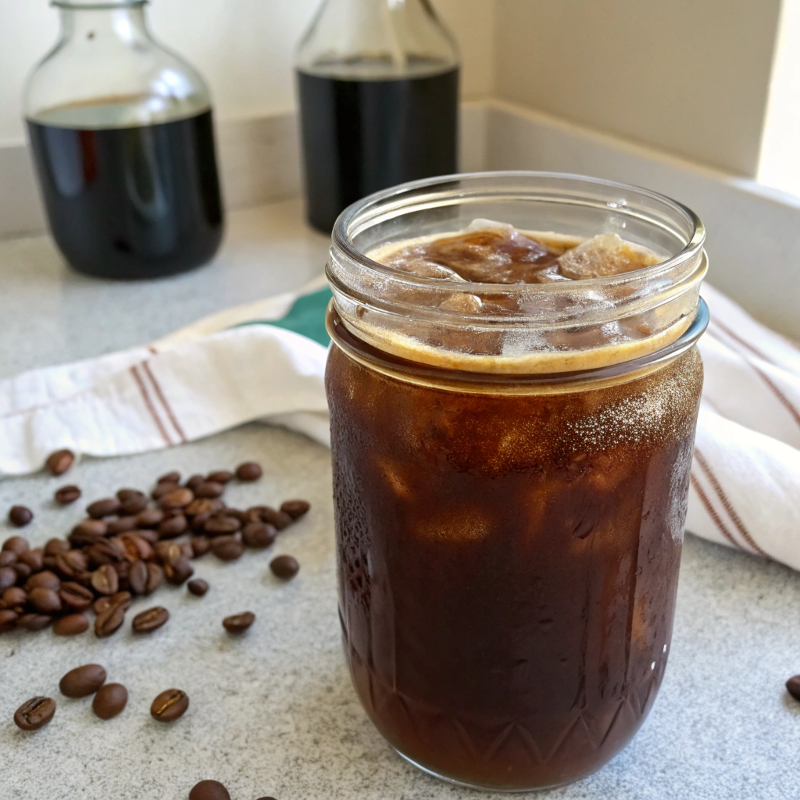
I was amazed at how simple the cold brew process is once I tried it. By extracting coffee slowly with cool water, you eliminate much of the acidity and bitterness found in hot brewing methods. The result is smooth, rich coffee that's perfect for hot summer days or anytime you want a refreshing coffee experience.
What Exactly Is Cold Brew Coffee?
Many coffee drinkers confuse cold brew with iced coffee. This misunderstanding leads to disappointment when attempting homemade versions. Understanding the fundamental difference is crucial for success.
Cold brew coffee is made by steeping coarsely ground coffee beans in cool water for 12-24 hours, resulting in a concentrate that's less acidic and smoother than traditional coffee. Unlike iced coffee, which is brewed hot then cooled, cold brew never encounters heat during preparation.
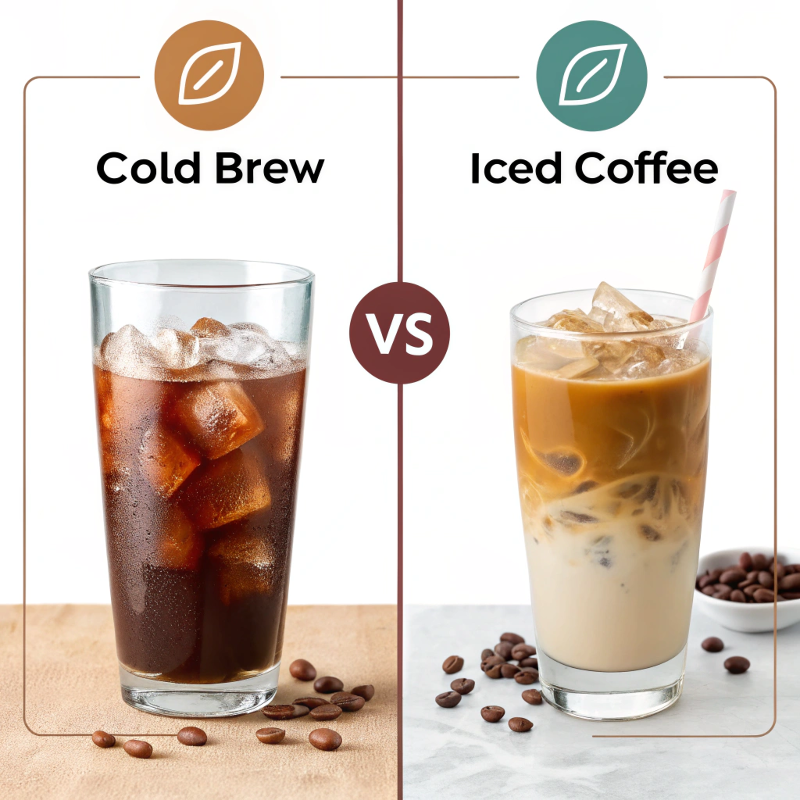
The science behind cold brew explains its distinctive characteristics. When coffee grounds meet hot water, acids and oils extract quickly, creating the familiar bright but potentially bitter flavor profile we associate with traditional coffee. Cold water extracts compounds much more slowly and selectively.
The Chemistry of Cold Brew
The cold brewing process primarily extracts the coffee's naturally sweet compounds while leaving behind many of the harsh acids. This results in approximately 70% less acidity compared to hot-brewed coffee. For coffee lovers with sensitive stomachs, this makes cold brew a gentle alternative that won't trigger discomfort.
I noticed this difference immediately when I switched to cold brew - no more afternoon stomach issues after my coffee breaks!
Caffeine Content
Contrary to popular belief, cold brew isn't necessarily stronger in caffeine than hot coffee. The concentration depends entirely on your coffee-to-water ratio. However, because cold brew is typically prepared as a concentrate that's later diluted, the base liquid often contains more caffeine by volume than regular coffee. When properly diluted, the caffeine content typically balances out to comparable levels with traditional brewing methods.
What Equipment Do I Need for Cold Brew Coffee?
Walking into specialty coffee shops, I've seen elaborate cold brew towers that cost hundreds of dollars. These impressive contraptions created anxiety about trying it at home. Fortunately, the equipment needs are actually minimal.
To make cold brew coffee at home, you need just four basic items: a large glass container (like a Mason jar), coarsely ground coffee beans, filtered water, and a straining method (such as a fine-mesh sieve, cheesecloth, or dedicated cold brew filter).

While cold brew can be made with bare-minimum equipment, having the right tools enhances both the brewing process and the final result. I've experimented with various setups over the years, from improvised methods to dedicated cold brewers, and can offer insights on what works best for different situations.
Container Options
Glass containers are ideal for cold brewing because they don't impart any flavors to your coffee during the long steeping process. Mason jars work perfectly for small batches (1-2 servings), while larger glass pitchers or food storage containers serve well for bigger quantities. Avoid plastic containers when possible, as they may affect flavor and can stain over time.
When I first started, I used a simple quart-sized Mason jar, which made enough cold brew concentrate for about a week of daily coffee.
Filtration Systems
The filtration method significantly impacts your cold brew's clarity and mouthfeel. Here's a comparison of common filtering options:
| Filtering Method | Pros | Cons |
|---|---|---|
| Paper coffee filters | Produces very clear brew, removes oils | Slow filtering process, can clog easily |
| Cheesecloth | Affordable, reusable, good filtration | Requires multiple layers, can be messy |
| Fine-mesh sieve | Quick and easy | Allows fine particles through, less clarity |
| Nut milk bag | Excellent filtration, reusable, easy cleanup | More expensive initial investment |
| Dedicated cold brewer | All-in-one solution, clean process | More expensive, single-purpose item |
Grinders
While pre-ground coffee can work, freshly ground beans make a significant difference. Burr grinders produce more consistent coarse grounds than blade grinders, resulting in more even extraction and better flavor. If you're serious about cold brew, a quality burr grinder is worth the investment.
How Do I Choose the Right Coffee Beans for Cold Brew?
Standing in the coffee aisle surrounded by countless options, I used to grab whatever was on sale. This approach led to cold brew that tasted flat and uninspiring. Bean selection dramatically impacts your final product.
For cold brew coffee, choose medium to dark roast beans with chocolate, nutty, or caramel flavor notes. Single-origin beans from Brazil, Colombia, Guatemala, or Ethiopia work exceptionally well. Freshness matters, but slightly older beans (1-2 weeks post-roast) can perform well in cold brew.
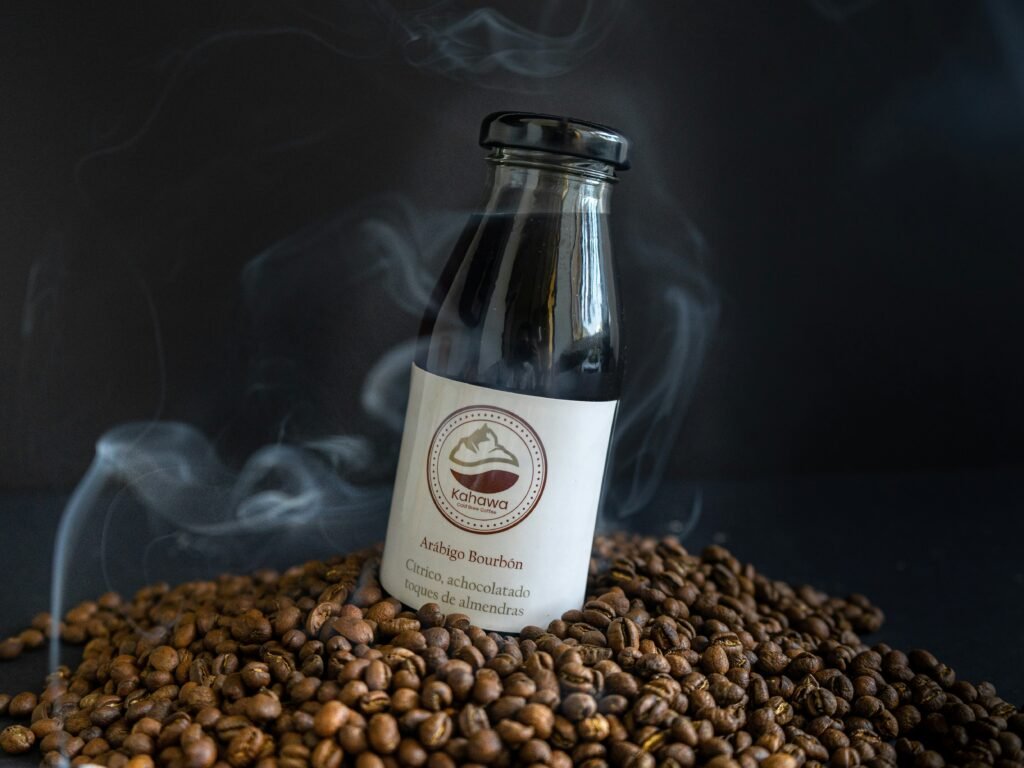
Cold brew's gentle extraction process creates a unique canvas for coffee flavors, highlighting different characteristics than hot brewing methods. Understanding how different beans perform in cold brew can help you customize your experience to match your flavor preferences.
Roast Levels for Cold Brew
The roast level significantly affects cold brew's flavor profile. While any roast can work, each offers distinct characteristics:
| Roast Level | Cold Brew Flavor Profile | Best Used For |
|---|---|---|
| Light Roast | Brighter, more acidic, fruity notes | Refreshing summer drinks, fruit-forward blends |
| Medium Roast | Balanced sweetness, chocolate notes | Everyday drinking, versatile base for mix-ins |
| Dark Roast | Bold, rich, lower acidity, chocolate/caramel notes | Strong concentrate, milk-based drinks |
Origin Characteristics
Different growing regions produce beans with distinctive flavor profiles that express themselves uniquely in cold brew:
- Central/South American beans (Colombia, Brazil, Guatemala): Create smooth, chocolatey cold brew with nutty undertones and medium body – ideal for beginners and everyday drinking
- African beans (Ethiopia, Kenya): Produce more complex cold brew with berry and citrus notes – excellent for those who enjoy brighter flavors
- Indonesian beans (Sumatra, Java): Deliver earthy, spicy notes with full body – perfect for rich, robust cold brew concentrates
My personal favorite is a medium-dark Colombian bean that creates a chocolatey cold brew with hints of caramel.
What's the Perfect Coffee-to-Water Ratio for Cold Brew?
My first cold brew attempts produced watery disappointments that lacked richness. Other batches came out so strong they were undrinkable. Finding the right concentration balance makes all the difference.
The ideal coffee-to-water ratio for cold brew is 1:4 to 1:5 by weight (1:2 to 1:3 by volume). For a concentrate, use 1 cup of coarsely ground coffee to 2 cups of water. For ready-to-drink cold brew, use 1 cup of coffee to 4 cups of water.
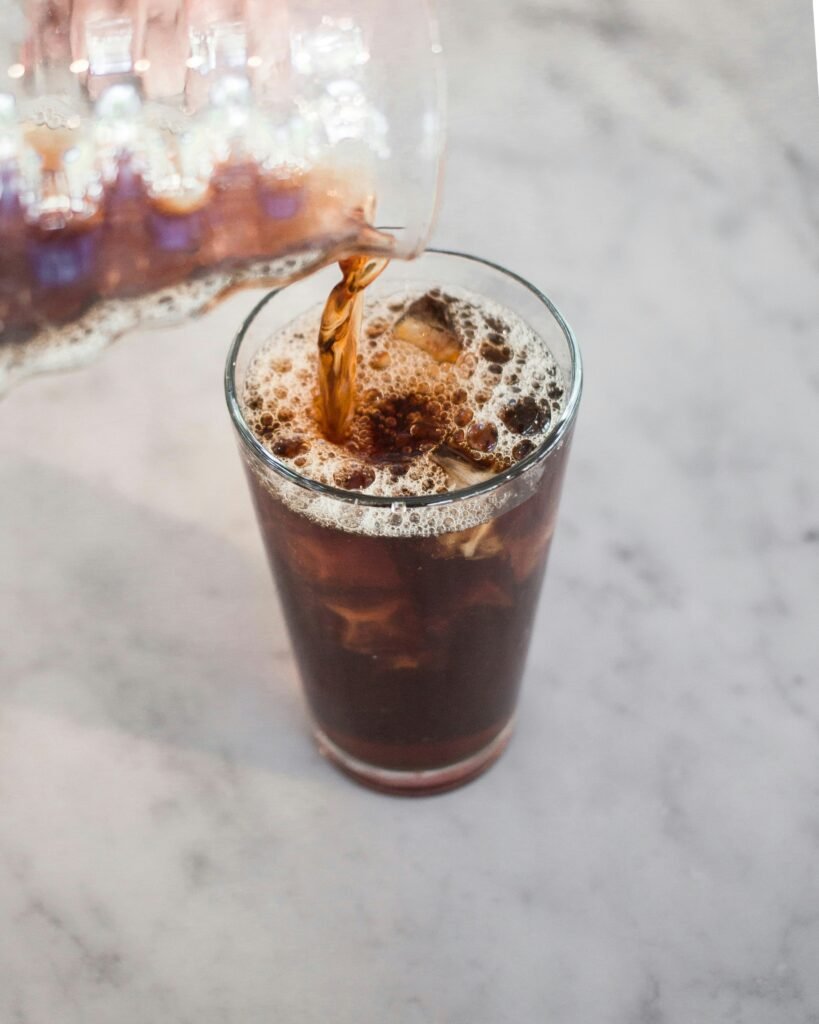
The ratio of coffee to water is perhaps the most crucial variable in cold brew preparation, determining both strength and extraction quality. Understanding how different ratios affect your final product helps you customize your cold brew to match your preferences and intended use.
Concentrate vs. Ready-to-Drink
Cold brew can be prepared in two primary formats: as a concentrate that requires dilution before drinking, or as a ready-to-drink beverage. Each approach has advantages:
| Cold Brew Format | Typical Ratio (by weight) | Advantages | Best For |
|---|---|---|---|
| Concentrate | 1:4 (250g coffee to 1000g water) | Space-efficient storage, versatile for recipes, longer shelf life | Batch preparation, coffee shops, recipe flexibility |
| Ready-to-drink | 1:8 (125g coffee to 1000g water) | Convenient, consistent strength | Immediate consumption, simplicity |
Measurement Methods
While professional baristas measure by weight for precision, volume measurements work well for home brewing. Here's a practical conversion guide:
- By Volume: 1 cup coarsely ground coffee to 2 cups water (concentrate) or 4 cups water (ready-to-drink)
- By Weight: 1 part coffee to 4 parts water (concentrate) or 8 parts water (ready-to-drink)
I typically use the concentrate method with a 1:2 volume ratio, which allows me to customize each serving based on my mood.
How Long Should I Steep My Cold Brew Coffee?
Patience tested me during early cold brew experiments. Checking after just a few hours yielded weak results, while forgetting a batch for days created bitter, over-extracted coffee. Timing significantly affects flavor development.
The optimal steeping time for cold brew coffee is 12-24 hours, with 18 hours generally producing the best balance of flavor. Steep at room temperature for a faster process (12-18 hours) or in the refrigerator for a slower, cleaner extraction (18-24 hours).
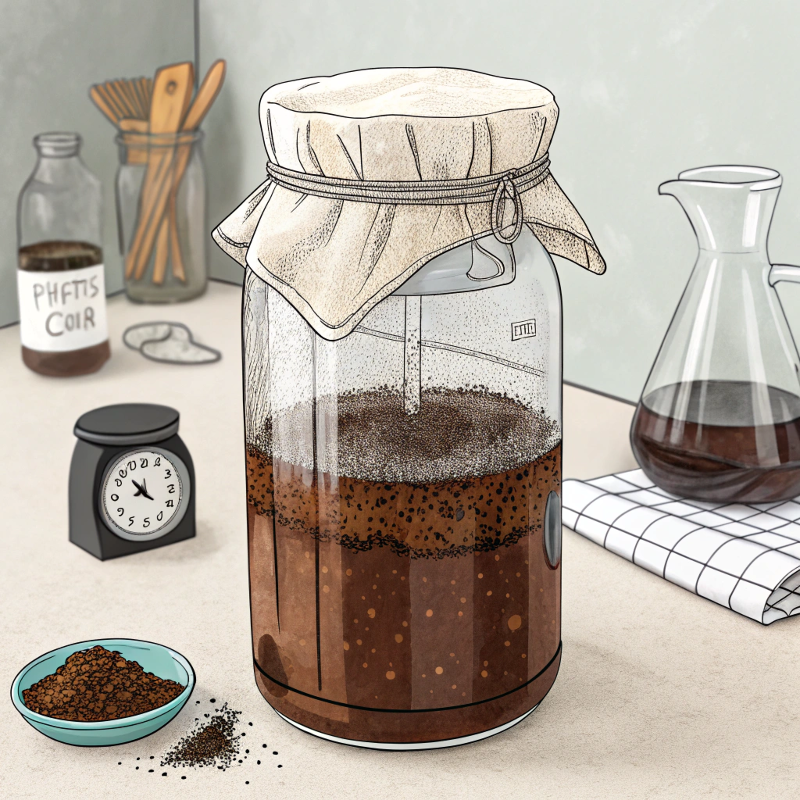
Steeping time directly influences cold brew's flavor profile, strength, and overall character. The extraction process happens gradually, with different compounds dissolving into the water at different rates. Understanding this timeline helps you control the final result.
Extraction Timeline
The cold brew steeping process follows a predictable pattern of extraction:
| Steeping Time | Extraction Phase | Flavor Characteristics |
|---|---|---|
| 0-2 hours | Initial extraction | Weak, underdeveloped, mainly lighter flavor compounds |
| 4-8 hours | Early development | Noticeable coffee flavor but lacking depth and body |
| 12-18 hours | Peak extraction | Optimal balance of sweetness, body, and flavor complexity |
| 18-24 hours | Complete extraction | Fuller body, maximum strength, potential for slight bitterness |
| 24+ hours | Over-extraction | Increasing bitterness, diminishing returns on strength |
Temperature Considerations
The steeping environment temperature significantly impacts extraction speed and flavor development:
- Room temperature brewing (68-75°F/20-24°C): Extracts more quickly with potentially more aromatic compounds but less stability
- Refrigerator brewing (36-40°F/2-4°C): Slower extraction resulting in cleaner flavor with less oxidation, better for longer steeps
I've found the sweet spot is starting at room temperature for 2 hours, then moving to the refrigerator for another 16 hours.
What's the Best Way to Strain Cold Brew Coffee?
After patiently waiting for my cold brew to steep, I once used a regular kitchen strainer to filter it. The resulting gritty texture ruined the experience. Proper filtration transforms muddy coffee into silky smooth cold brew.
For best results, strain cold brew coffee using a two-stage filtering process. First, pour through a metal mesh strainer to remove larger particles, then filter again through paper coffee filters, a clean cloth, or a nut milk bag to catch fine sediment.

The filtration method you choose significantly impacts your cold brew's clarity, mouthfeel, and overall quality. Different methods offer varying levels of filtration effectiveness, convenience, and sustainability. After experimenting with numerous approaches, I've found that understanding the strengths and weaknesses of each method helps you select the best option for your specific needs.
Filtration Methods Compared
Each filtration approach offers distinct advantages and challenges:
| Filtration Method | Clarity Level | Ease of Use | Sustainability | Best For |
|---|---|---|---|---|
| Paper coffee filters | Very high | Medium | Low (disposable) | Crystal-clear brew, occasional use |
| Metal mesh filters | Low to medium | High | High (reusable) | Quick filtering, accepting some sediment |
| Cheesecloth | Medium to high | Low | Medium (reusable but needs replacement) | Balancing clarity and sustainability |
| French press | Low | Very high | High (integrated system) | Convenience over clarity |
| Nut milk bag | High | Medium | High (durable, reusable) | Regular brewing with good clarity |
Multi-Stage Filtration
For commercial-quality cold brew clarity, a two-stage filtration process yields superior results:
- Primary filtration: Use a coarse method (metal strainer or French press) to remove most grounds
- Secondary filtration: Pour the results through a finer filter (paper filter, nut milk bag, or tightly woven cloth)
My preferred method is using a metal sieve lined with cheesecloth, which gives excellent clarity without being too time-consuming.
How Should I Store and Serve My Cold Brew Coffee?
After perfecting my cold brew process, I once stored the precious liquid in an old plastic container. Days later, it tasted stale and had absorbed refrigerator odors. Proper storage and serving methods preserve cold brew's complex flavors.
Store cold brew coffee in an airtight glass container in the refrigerator for up to two weeks. When serving, dilute concentrate with water, milk, or ice at a 1:1 ratio. For best flavor, consume within 7-10 days, as quality gradually diminishes even under ideal storage conditions.
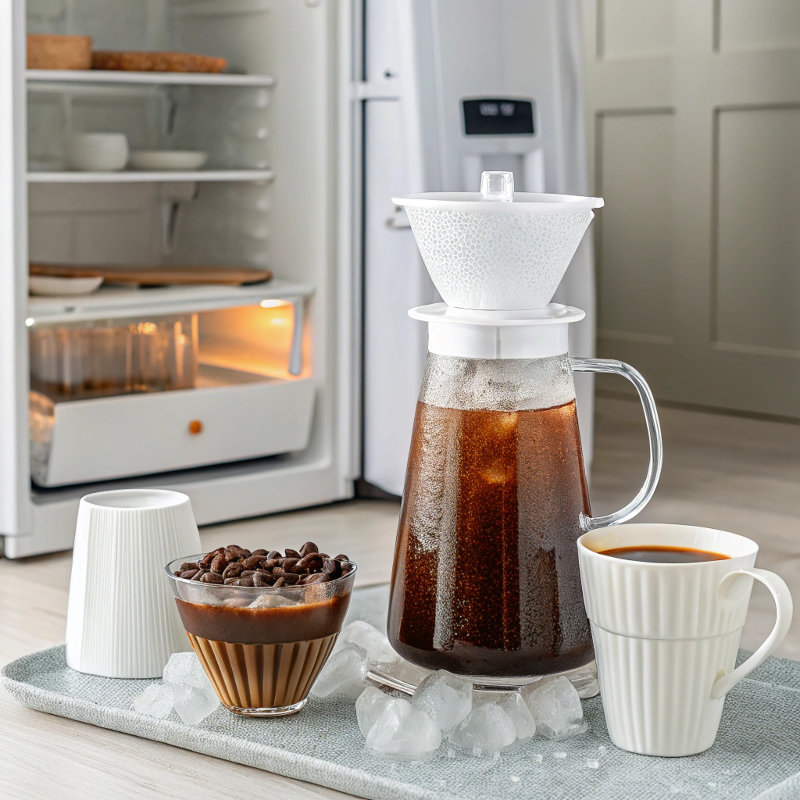
Once you've created perfect cold brew, proper storage and serving techniques help maintain its quality and allow you to enjoy it in various ways. Cold brew's chemistry makes it more stable than hot-brewed coffee, but it still requires specific conditions to preserve its best characteristics.
Storage Best Practices
Cold brew's longevity depends significantly on storage conditions:
| Storage Factor | Recommendation | Impact on Quality |
|---|---|---|
| Container material | Glass or stainless steel | Prevents flavor contamination and leaching |
| Air exposure | Minimize with airtight containers | Prevents oxidation that causes stale flavors |
| Temperature | 36-40°F (2-4°C) | Slows bacterial growth and flavor degradation |
| Light exposure | Store in opaque containers or dark places | Prevents light-induced degradation |
| Duration | Consume within 7-10 days (ready-to-drink) or 14 days (concentrate) | Quality peaks early and gradually declines |
Creative Cold Brew Applications
Beyond basic serving methods, cold brew's smooth profile makes it ideal for culinary applications:
- Cold brew ice cubes: Freeze concentrate in ice cube trays to add to iced coffee without dilution
- Coffee cocktails: Use as a base for espresso martinis, coffee old fashioneds, or coffee tonics
- Culinary uses: Incorporate into desserts like tiramisu, ice cream, or chocolate cakes
- Breakfast applications: Add to overnight oats, smoothies, or protein shakes for coffee flavor with less acidity
My favorite summer treat is blending cold brew concentrate with vanilla ice cream for a quick coffee milkshake!
Conclusion
Making exceptional cold brew coffee at home requires just a few simple steps: coarse grinding, proper ratios, patient steeping, careful filtration, and appropriate storage. The minimal equipment investment delivers smooth, low-acid coffee that rivals expensive cafe offerings while saving you significant money.




